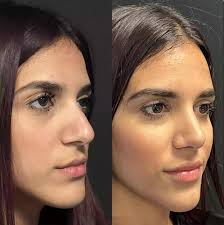Rhinoplasty in Abu Dhabi, commonly known as a nose job, is a surgical procedure aimed at reshaping and enhancing the appearance of the nose. It is one of the most popular cosmetic surgeries globally, sought after by individuals looking to improve facial harmony and boost self-confidence. In this comprehensive guide, we delve into the intricacies of rhinoplasty, exploring the procedure, its benefits, and what to expect before, during, and after surgery.
Introduction to Rhinoplasty
Rhinoplasty involves altering the size, shape, or proportions of the nose to achieve desired aesthetic outcomes. Beyond cosmetic reasons, rhinoplasty can also address functional issues such as breathing difficulties caused by nasal deformities or injuries. The procedure is highly customizable, with surgeons tailoring their approach to meet the unique needs and goals of each patient.
Understanding the Procedure
Preparation:
Before undergoing rhinoplasty, patients undergo a thorough consultation with their surgeon. During this consultation, the surgeon evaluates the patient's nasal structure, discusses their goals and expectations, and develops a personalized surgical plan. Patients may be advised to stop smoking and avoid certain medications that can increase the risk of complications during surgery.
Anesthesia:
Rhinoplasty is typically performed under either local anesthesia with sedation or general anesthesia, depending on the extent of the surgery and the preferences of the patient and surgeon. The chosen anesthesia ensures that the patient remains comfortable and pain-free throughout the procedure.
Incisions:
The surgeon makes incisions inside the nostrils (closed rhinoplasty) or across the columella, the narrow strip of tissue between the nostrils (open rhinoplasty). The choice of incision technique depends on the specific goals of the surgery and the surgeon's preferred approach.
Reshaping the Nose:
Once the incisions are made, the surgeon carefully reshapes the nasal bones, cartilage, and tissue to achieve the desired outcome. This may involve removing excess tissue, refining the nasal tip, straightening a crooked nose, or narrowing the nostrils.
Closing Incisions:
After making the necessary adjustments, the surgeon closes the incisions with dissolvable sutures. If external incisions were made, the surgeon may place a splint or cast over the nose to support and protect it during the initial stages of healing.
Benefits of Rhinoplasty
Rhinoplasty offers a range of benefits, both aesthetic and functional, including:
- Improved facial symmetry and proportion
- Enhanced nasal contour and definition
- Correction of nasal deformities or irregularities
- Correction of breathing difficulties caused by nasal obstruction
- Boost in self-confidence and self-esteem
Recovery Process
Following rhinoplasty, patients can expect some swelling, bruising, and discomfort, which gradually subside over the following weeks. It is essential to follow post-operative instructions provided by the surgeon, which may include:
- Keeping the head elevated to reduce swelling
- Avoiding strenuous activities and heavy lifting
- Taking prescribed medications to manage pain and prevent infection
- Attending follow-up appointments to monitor progress and remove any splints or sutures
Potential Risks and Complications
While rhinoplasty is generally safe, like any surgical procedure, it carries some risks, including:
- Infection
- Bleeding
- Adverse reaction to anesthesia
- Unsatisfactory aesthetic outcomes
- Breathing difficulties
- Revision surgery may be required in some cases to address any issues or achieve desired results fully.
Conclusion
Rhinoplasty is a transformative procedure that can enhance both the appearance and function of the nose, ultimately improving the overall facial harmony and boosting self-confidence. By understanding the intricacies of the procedure, patients can make informed decisions about whether rhinoplasty is the right option for them.






Comments